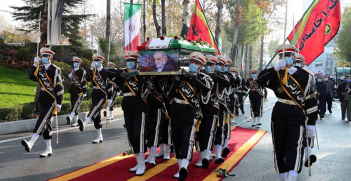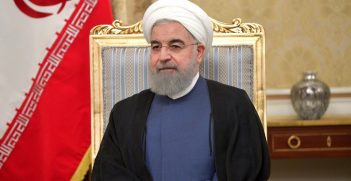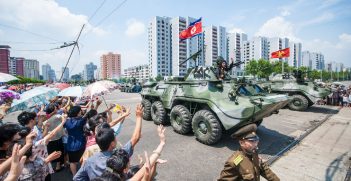The Mistakes That Brought Down Flight 752

Several key shortcomings in Iran’s defence infrastructure and capability compounded the night Ukrainian Airlines flight 752 was shot down. While uncertainty since that night has slightly abated, little seems to have changed.
January of 2020 proved to be rough. As everyone was busy celebrating the new year, Iranians were rattled by the news that General Qasem Soleimani had been killed in Iraq by a US airstrike. Some loved the general, some hated him, and many were scared of the aftermath of his death and how Iran would respond. The risk in these situations is that when one side goes overboard in its response, it can escalate into a bigger conflict. Iran did finally respond to the Soleimani attack by firing missiles into the Ayn Al-Asad airbase.
As shocking and scary Iran’s retaliation was, another event happened at around the same time that saddened Iranians beyond words. A few hours after the missile strike, Ukrainian Airlines flight 752 went missing minutes after leaving Tehran’s Imam Khomeini International Airport. Sadly, all souls on board were lost.
There was much speculation about what caused this incident, and after three days of lies and misinformation, Iranian Revolutionary Guard Corps authorities finally accepted blame for downing the plane with a Surface-to-Air system. Several key mistakes led to the downing of flight 752, and a clear crisis of management followed.
Perhaps the first mistake in the chain of events that caused this catastrophe was not closing the country’s airspace in such a time of turmoil and risk of war. Just a few hours before the flight took off, at around 1:30 AM local time, Iran had launched around 20 ballistic missiles towards Ayn Al-Asad and Erbil in Iraq. At that stage, no one knew whether there were casualties and how the strike would affect decision-makers in Washington. Iran knew that the situation was tense, and its air defence and air force were on high alert. With the chance of conflict high, it should have been essential to close Iranian airspace and suspend commercial flights for at least eight to 12 hours.
The second mistake was the positioning of the Russian-made Tor M1 near Imam Khomeini International Airport. The Tor system has a limited and short coverage, an engagement range of around 12 kilometres, and a ceiling of around six kilometres. The small engagement envelope around the system gives its operator a short time to decide to whether intercept a target or not. Another shortcoming of the system is its limited up-link and data sharing capabilities with other, more powerful systems. Finally, Iran’s older Tor system lacks the electro-optic and infrared surveillance instruments needed to see targets in the dark that are found in more modern systems.
All of these factors combined mean Iran’s Tor systems are poorly suited to being based near an international airport. The radar operator was unable to optically check that the target he was about to launch missiles at was not, in fact, a cruise missile, but rather a Boeing 737. This was not the first time that Tor has caused disaster – a couple of years ago, another IRGC Tor M1, took down an Iranian air force F-14 Tomcat over the Persian Gulf.
The last mistake, better classified as a shortcoming, in the chain of events is the weak training level of Iranian armed forces. The curricula of officer cadet trainings and command and staff colleges in Iran are usually old and outdated, and a big component of the courses is religious rather than technical. The technical training is limited to the experiences from the Iran-Iraq war three decades ago. One of the refresher courses held for commissioned and warrant officers is called “Maerefe Jang,” loosely translated to “Education on War,” reviews important operations from the Iran-Iraq War and brings in eulogists to mourn those lost, especially the martyrs, and recall the stories from Ashura. Essentially, Maerefe Jang is a propaganda course to strengthen the ideological core of personnel rather than educating them on technical issues.
In addition to the structural mistakes, there were some key staff who could have helped avoid this catastrophe. To start, the chief of staff for the Armed Forces of the Islamic Republic of Iran and the secretary of the Supreme National Security Council of Iran did not make an order to close Iranian airspace at least until sunlight on January 8. There has been speculation that this was done in order to deter the US from attacking Iran after the Ayn Al-Asad strike. The US has very capable airborne early warning and control aircraft and systems to monitor airspace and minimize risks to civilian aircraft. Alternatively, cruise missiles wouldn’t have affected civilian airliners much, as targets would probably be military installations, so deterrence wasn’t a good reason to leave Iranian airspace open.
Next, we should consider the battery commander in charge of the Tor M1. Although the Tor system has many shortcomings, discussed above, if a well-trained officer had been sitting behind the radar and controlling the system on that night, they would have spotted the difference in Radar Cross-section (RCS) – a Tomahawk cruise missile has an RCS of 0.5 m2, whilst a Boeing 737 has an RCS of 20 m2 or more. In addition, the flight path, speed, and altitude flight 752 was traveling on was not what a cruise missile uses. Flight data shows that the Ukrainian plane’s altitude was around 1500 metres and climbing. A cruise missile, on the other hand, flies at low altitudes, around 50 to 100 metres, to evade radar detection. It also would have been traveling at a different velocity than the rising 737.
Finally, responsibility falls on the commander of the IRGC aerospace force, General Amir-Ali Hajizadeh. Figuring out that one of your surface-to-air missile batteries has shot down a civilian airliner should not take three days. Two missiles were shot at flight 752, surface-to-air missiles are not easily lost. Upon hearing the news of the loss of a civilian airliner, Hajizadeh should have checked in with every system commander based around Tehran to find out if they had engaged any targets the night before.
All of this comes down to weak training. Ethically, the battery commander should have told his superiors of what he had done, and they should have passed on that information. On the technical side, with mobile phones everywhere, and open-source intelligence researchers doing great investigative work, it is not as easy as it was twenty years ago to hide such an event and brush it off. It looks like the three-day delay was an attempt to find some way to cover the whole thing up, as was bulldozing the crash site. But as more information leaked to social media every hour, it became extremely difficult to do so.
It is no longer possible to hide such mistakes and get away with it, and Iran needs to learn this. Many, like myself, hoped this catastrophe could lead to some level of parliamentary and executive oversight of the armed forces, but unfortunately that hasn’t happened. Iran’s armed forces still do whatever they want without being responsible to the Iranian people or their directly elected representatives.
Sirous Amerian is a PhD candidate and tutor at the Centre for Defence and Security Studies at Massey University in New Zealand. He tweets at @AmerianS.
This article is published under a Creative Commons Licence and may be republished with attribution.





